Nepali politics sees a major reconfiguration in time for a watershed election / Politics

An unusual emblem entered Nepal’s political iconography early this August. In Bharatpur, supporters of the southern city’s new mayor, Renu Dahal, sewed together the flags of the Nepali Congress and the Communist Party of Nepal (Maoist Centre)—stars and stripes in red and white in the first case, and a hammer and sickle in white on red in the other—and paraded in celebration. Dahal, the daughter of the CPN(MC) leader Pushpa Kamal Dahal, better known as Prachanda, won after a partial rerun of an earlier local-body election. The first, disputed run of the Bharatpur vote was held in May; CPN(MC) activists interrupted counting to tear up ballots. Prachanda was then the prime minister, at the head of a coalition between the CPN(MC) and the Congress, and, in keeping with the conditions of the alliance, he resigned shortly afterwards in favour of Sher Bahadur Deuba, the Congress supremo and present incumbent. The August celebrations in Bharatpur suggested that the alliance continued in good health, to the cost of the Communist Party of Nepal (United Marxist Leninist)—a member, alongside the two allied parties, of the “big three” of Nepali politics in recent times.
This story is from the November 2017 edition of The Caravan.
Start your 7-day Magzter GOLD free trial to access thousands of curated premium stories, and 8,500+ magazines and newspapers.
Already a subscriber ? Sign In
This story is from the November 2017 edition of The Caravan.
Start your 7-day Magzter GOLD free trial to access thousands of curated premium stories, and 8,500+ magazines and newspapers.
Already a subscriber? Sign In

Mob Mentality
How the Modi government fuels a dangerous vigilantism
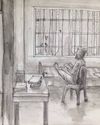
RIP TIDES
Shahidul Alam’s exploration of Bangladeshi photography and activism

Trickle-down Effect
Nepal–India tensions have advanced from the diplomatic level to the public sphere
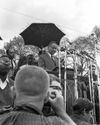
Editor's Pick
ON 23 SEPTEMBER 1950, the diplomat Ralph Bunche, seen here addressing the 1965 Selma to Montgomery March, was awarded the Nobel Peace Prize. The first black Nobel laureate, Bunche was awarded the prize for his efforts in ending the 1948 Arab–Israeli War.

Shades of The Grey
A Pune bakery rejects the rigid binaries of everyday life / Gender
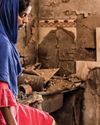
Scorched Hearths
A photographer-nurse recalls the Delhi violence
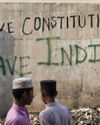
Licence to Kill
A photojournalist’s account of documenting the Delhi violence
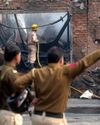
CRIME AND PREJUDICE
The BJP and Delhi Police’s hand in the Delhi violence

Bled Dry
How India exploits health workers

Status Update
India’s telling silence on the Hagia Sophia controversy